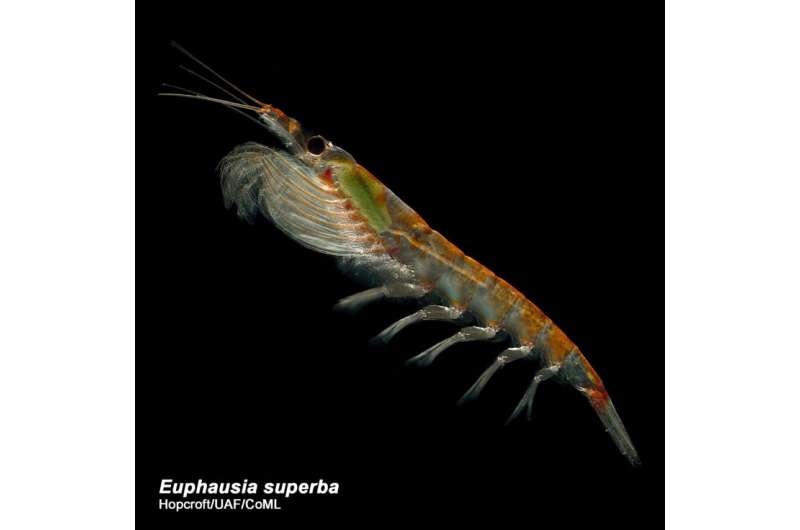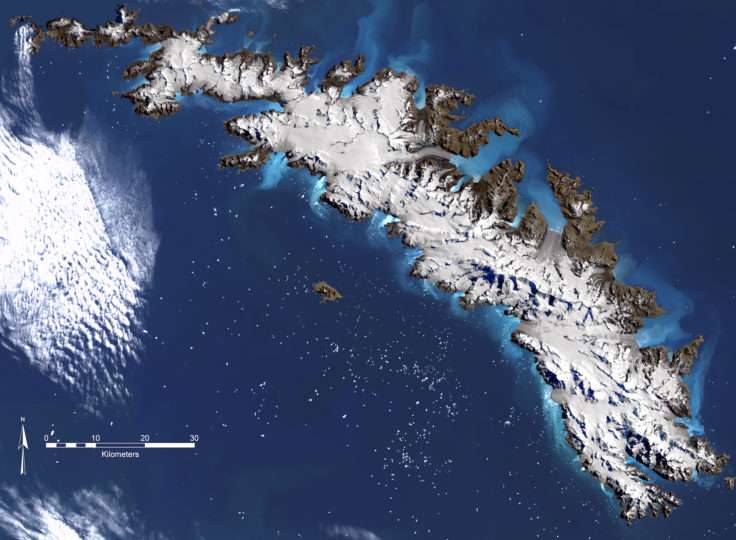Nature's ocean fertiliser

Scientists have discovered that Antarctic krill – a tiny shrimp-like crustacean – plays a key role in fertilising the Southern Ocean with iron, which stimulates the growth of phytoplankton, the microscopic plants at the base of the marine food web. This finding is important for understanding the oceans' capacity for carbon capture.
Reporting this month in the journal Current Biology, a team of European researchers describe how iron-rich rock particles are dissolved in the acidic guts of krill. The discovery is an important step forward in understanding key processes in one of the most biologically-rich regions of our planet.
The research team found that particles that usually sink to the sea-bed are eaten by krill. Within their acidic guts, iron is freed from these particles and can be released in dissolved form into the ocean either directly by krill, by the microorganisms that decompose krill faecal pellets or by whales, seals and penguins that eat them. Krill also produce iron-binding chemicals (called ligands) that prevent the iron from re-attaching onto particles and therefore release it back into the ocean.
This natural iron fertilisation stimulates the growth of phytoplankton – the tiny plants that bloom in the ice-free surface waters during the Antarctic summer and form the base of the Southern Ocean food web. This process also enhances the Southern Ocean's capacity for natural storage of carbon dioxide.
Lead author Katrin Schmidt, who undertook the research whilst at British Antarctic Survey (BAS) says:
"We know that phytoplankton blooms in the Southern Ocean play a critical role in both sustaining the ecosystem and processing carbon from the atmosphere. It is very likely that in a warming climate, the supply of mineral particles from land-based sources into the ocean will increase and we are keen to investigate how our oceans will respond in the future. This discovery gives us a new understanding of how iron-rich rock particles are being converted into an ocean fertiliser by these remarkable animals. The animals we studied near glacial outlets had three times more iron in their muscles than krill found off the continental shelf. Not only do krill provide a rich source of protein and omega-3 fatty acids for animals and humans, we now know that they play an important role in nutrient and carbon cycles."
Iron is an essential element for life, but large parts of the world's oceans experience limited concentrations. Land-derived particles such as fine grains of rock from glacial erosion, windblown dust and river discharges are a potential source of iron for the ocean, but the vast majority is insoluble and sinks to the ocean bed.

Co-author Dr Angus Atkinson from Plymouth Marine Laboratory says:
"It is well-known that krill can recycle iron that is already incorporated in biological matter, but this is the first time that anyone has found that their ability goes beyond recycling. This ability to convert iron into a fertilising solution that boosts coastal and ocean waters changes our view of how the ocean might respond to future change."
The team analysed data from a research cruise on the BAS-operated RRS James Clark Ross around the sub-Antarctic island of South Georgia during 2010/2011. Phytoplankton blooms downstream of South Georgia were more intensive and longer lasting when there was a high abundance of krill.
Dr Schmidt continues:
"For this study we examined krill but it is very likely that other ocean filter-feeders such as salps, copepods and mysids may share this iron-dissolving mechanism."
Co-author BAS Biological Oceanographer Dr Sophie Fielding says:
"This finding is essential for understanding the ocean's capacity for carbon capture. As atmospheric carbon dioxide levels increase, it's essential for us to understand both the physical and biological mechanisms for fertilising the ocean with iron."
More information: Katrin Schmidt et al. Zooplankton Gut Passage Mobilizes Lithogenic Iron for Ocean Productivity, Current Biology (2016). DOI: 10.1016/j.cub.2016.07.058
Journal information: Current Biology
Provided by British Antarctic Survey



















